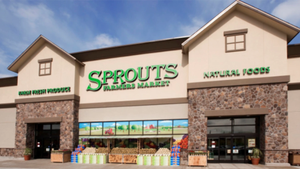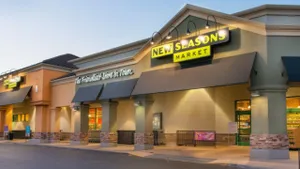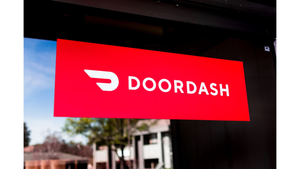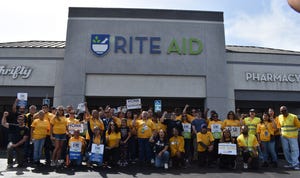Everything covered
The right packaging has to be more than recyclable materials. It must meet the growing demands of consumers and retailers.
January 1, 2018
The right packaging has to be more than recyclable materials. It must meet the growing demands of consumers and retailers. By Nora Caley If you want to know what the trends are in fresh packaging, look to the not-so-humble cupcake. The bakery treat is still a crowd favorite and the way retailers are presenting the confection reflects some important consumer and retailer demands. “We have developed three or four cupcake packages over the last six months or so,” says Dave Fosse, director of marketing for Lindar Corp., a packaging company based in Baxter, Minn. “Cupcakes continue to grow. It is amazing.” Among the features of Lindar’s new cupcake packaging, Fosse says, is the lack of fluting. Those little columns make the package sturdy, but consumers and retailers want less packaging, he says. Lindar responded by creating structural features in the corners. Also, Lindar cleaned up the design on the front of the packaging so shoppers can better see the cupcakes. The changes point to two trends. The larger trend lately has been towards the green or sustainability issues. Other features are becoming important as well, such as product visibility. For merchandising, packaging is becoming more clear, or as Fosse says, not optically challenged. “The bottom line is it needs to be simple for the store people to make sure it is displayed nicely and it needs to look good for the customer to pick it up and buy it,” he adds. Lindar’s new containers are available in sizes for one, two and four cupcakes. Clear Lam Packaging also recently developed a cupcake container. Roman Forowycz, chief marketing officer for the Elk Grove Village, Ill.-based company, says he sees increased demand for premium single-serve cupcakes. “Cupcakes satisfy the consumer’s need for a periodic indulgence without the guilt and cost associated with buying a big cake,” he says. The company is launching a gift box package for a single count cupcake or muffin. The box, Forowycz says, is designed to hold the cupcake in place and allows the consumer to easily pull the cupcake out without getting their hands messy. Of course no retailer, and no consumer, can live on cupcakes alone. People also eat pizza, sandwiches and other foods from the supermarket deli and prepared foods sections. The features that are important in the bakery are also necessary in other departments. Clear view Patrick Starrett, product manager for Robbie Flexibles, a Lenexa, Kan.-based packaging company, says his consumer research has uncovered several preferences. “We learned that 73% of consumers consider a package’s sustainability attributes before making a purchase decision,” he says. Other important attributes include graphic appearance, leak resistance, handle for easy carrying and ability to see the product. The last feature is especially important, as several details can affect visibility. Robbie’s Hot N Handy Deli Pouches and Fresh N Tasty Produce and Bakery Pouches offer an anti-fog window. “The window was strategically designed, giving the consumer a clear view of the product from different angles while still leaving ample room for the retailer to brand the package. The top, bottom and both sides of the pouch are great for printing coupons, recipes or other important merchandising messages,” Starrett adds. Anti-fog is very big now, agrees Barak Bright, director of marketing for BagcraftPapercon. The Chicago-based company is expanding its line of Dubl View To Go! sandwich bags to include versions for 6- and 12-inch subs. “The anti-fog film prevents condensation so you get a clear, crisp view,” he says. “You are showcasing ingredients with a mixture of colors, and a colorful display means more impulse purchases.” Fold-Pak, based in Norcross, Ga., expanded its Bio-Pak and Bio-Plus Earth lines to include Bio-Pak View and Bio-Plus View. The paper products feature a window to allow shoppers to see the contents inside the box. Marketing manager David Federico says the new packaging can help supermarkets boost their grab-and-go sales. “The Bio-Pak View and Bio-Plus View provide a high quality, attractive package to meet this need. They are leak and grease resistant and can hold any type of food whether it is hot, cold, wet or dry. They are microwaveable and the window is an anti-fog poly window, which will ensure the food inside is always visible,” he says. Foods have to look appealing inside a display case, so Placon Corp., based in Madison, Wis., introduced Evolutions, a PET square deli container. “Square packaging is becoming more common since it allows better display case utilization and the recessed lid provides stable stacking,” says Jeff Lucash, national sales manager. “Visual clarity is extremely important. Consumers want to buy food they can see and verify is fresh.” Consumers also want to see how much of a product they have left. For that, Evergreen Packaging developed Fresh-Look cartons with windows and made with renewable materials. Erin Reynolds, senior marketing manager, dairy, for the Memphis-based company, says the Fresh-Look cartons were well received. “In consumer testing, consumers gave paper cartons with windows an overall ‘A.’ Consumers believe it will be superior to current packaging in use of renewable resources, making the product inside more appealing and allowing them to easily see how much is left inside.” Visual clarity is important for merchandising, but so are labels and other graphics. Herb Knutson, director of marketing for Inline Plastics Corp., based in Shelton, Conn., says these two features can coexist. “A smart way to balance the need for clarity and the need for retailer info, usually via label, is to increase the amount of clarity on the container itself,” he says. Inline’s Crystal Fresh, a new product line for retail and in-store bakeries, features a non-ribbed design, which Knutson says provides an upscale, non-obstructed view of the food. The packaging is made from clear 100% recyclable PET material, which provides product visibility, is leak resistance and offers improved shelf life of contents. Knutson agrees that sustainability is still a major issue. Inline’s recyclable material is produced using a unique, energy-efficient proprietary process. “It has been shown to have a carbon footprint as low as competing materials made from 50% post-consumer recycled plastic. Using these containers gives our customers the benefits of the clarity and strength of virgin plastics while also having a low carbon footprint,” he says.
“Consumers of canned goods are also concerned about the environment,” says Petra L’Abbe, director of marketing, global packaging for Valspar, a Minneapolis-based paint and coatings company and a global leader in packaging coatings. “Recently there has been a lot of industry news on the topic of BPA. Many consumers and brand owners have expressed interest in can linings that do not use this material.” The company has developed new coatings for beverage containers, food cans, caps, closures, specialty cans and other applications that do not contain BPA, or Bisphenol A, an organic compound whose safety has been questioned by some governments. Also among Valspar’s environmental and energy initiatives is the company’s GEN VI technology, a water-based inside spray coating for beverage cans. “GEN VI provides the industry improved material efficiencies and energy savings opportunities in addition to the environmental advantages of being a water-based technology with less volatile organic compound content,” L’Abbe says. “Additionally, Valspar offers a powder coating technology option for the seam on the inside of the three-piece can, providing another opportunity for a positive environmental impact.” Skip the plastic Another way to be environmentally friendly is to not use plastic. Plymouth, Minn.-based Ultra Green Packaging, whose packaging is fiber based, extended its line of Tree Saver Pizza Boxes for supermarket take-and-bake pies. The original boxes were for deep-dish pizzas and featured a flat inside fold lid. The new boxes are for a thinner crust and the lid is a low dome lid. Both versions of Tree Saver Pizza boxes are available in five sizes, from 8-inches to 16-inches. No matter what the size, visibility is key. “The lid is crystal clear, and it definitely helps promote the ingredients and the overall look of the pizza,” says Michael Wood, vice president of food service sales for Ultra Green. “I feel strongly that any grocery store chain has a definite selling strategy when people can see their food.” Another plant-based packaging company is Plantic Technologies, an Australian company with a U.S. office in North Andover, Mass. The company makes Plantic eco Plastic made from corn starch derived from non-genetically modified corn. The packaging can extend the shelf life of fresh meat and fish up to 40%, which translates to more revenue for retailers, says Thomas Black, president of Plantic Americas. “Say you have 11 days of shelf life on a product. As a retailer, what would you do on the ninth day? You discount it because want to move it. So if I can extend that to 14 days, that’s a longer period of time in which you get full value for the products.” The new packaging products include Plantic eco Plastic Vacupack, Plantic eco Plastic Ultra-high barrier trays and Plantic eco Plastic high barrier roll stock. There are environmental benefits to foods having a longer shelf life. ARPAC Food Group, based in Schiller Park, Ill., manufactures a turnkey system of machinery and packaging to extend shelf life. The company’s Shelf Life Booster is a modified atmosphere packaging system that uses nitrogen, not vacuuming, to remove oxygen from inside the package. “There is more to sustainability than recyclable materials,” says Greg Levy, president of ARPAC. “It’s also how often you need to make a delivery. You can get more for your money if you have to deliver once a week versus daily delivery. That’s a lot of carbon footprint you save.” Levy says Shelf Life Booster works especially well with meat and that one customer extended fresh sausage from a four-day shelf life to 15 days without additives and preservatives. Another retailer extended the life of its meat and cheese trays to 100 days. Watch your weight Another way to be green is to make packages lightweight. “Light-weighting encompasses many different efforts,” Forowycz says. “It is not only making a bag, tray or bottle thinner and lighter. It is about intelligently designing consumer packaging to eliminate weight without compromising the package performance or the consumer’s satisfaction.” For example, he says, the Clear Lam Peel Reseal Technology uses a film instead of a rigid, preformed lid. The film has an intuitive opening and closing feature, and can help make the package 30% to 35% lighter in weight. Film also eliminates the need to truck preformed lids to processors or to retail outlets. Reynolds points to another reason light-weighting can be beneficial. “It reduces dependence on limited resources as well as waste disposal where recycling does not yet occur,” she says. Erik O’Neil, vice president of sales for SOLUT!, based in Lewis Center, Ohio, says light-weighting is critical but it is not easy to do. “The typical trade-off to lightweight packaging is poor package performance due to decreased rigidity of the tray that can compromise the food either in distribution or on the merchandising shelf,” he says. SOLUT! developed a line of retail party platters and smooth wall PET dome lids made with 60% recycled corrugated paperboard. O’Neil says the company has eliminated the weight versus performance trade-off with the fluted three-layer paper structure in corrugated paper. The trays are shipped in a corrugated master case. “Corrugated paper is very strong and lightweight,” he says. “SOLUT! trays are often 20% to 40% lighter by weight than the alternative plastic trays while providing equivalent or improved performance from distribution through to the consumer’s table.” O’Neil says the trays are dual-ovenable, so retailers can offer consumers the convenience of heat-and-eat party platters such as chicken wings, quesadilla or mini-burgers. “We see retail supermarkets continuing to further their private label brands into the retail party platter segment of the deli. These items are often co-packed by outside suppliers, but the retailer wants to promote their private label and sustainable packaging efforts in this category,” he adds. Others are paying attention to the demand for party platters. “Catering is big business for grocery store delis,” Wood says, adding that Ultra Green is developing packaging for large deli orders. “We are going to be getting into catering, taking the round footprint and adding a four-inch dome lid.” Levy agrees that large orders are a trend to watch. “We are seeing lots of value packs andmore meal systems where you have trays with multiple compartments, such as salad, protein, dessert all in one tray. It’s a more pleasant-looking TV dinner.” Fosse says Lindar is developing packaging for other baked goods, and for other areas in addition to bakery. “It doesn’t matter what segment it is,” he says. “The ultimate goal is to increase sales.”
About the Author
You May Also Like




